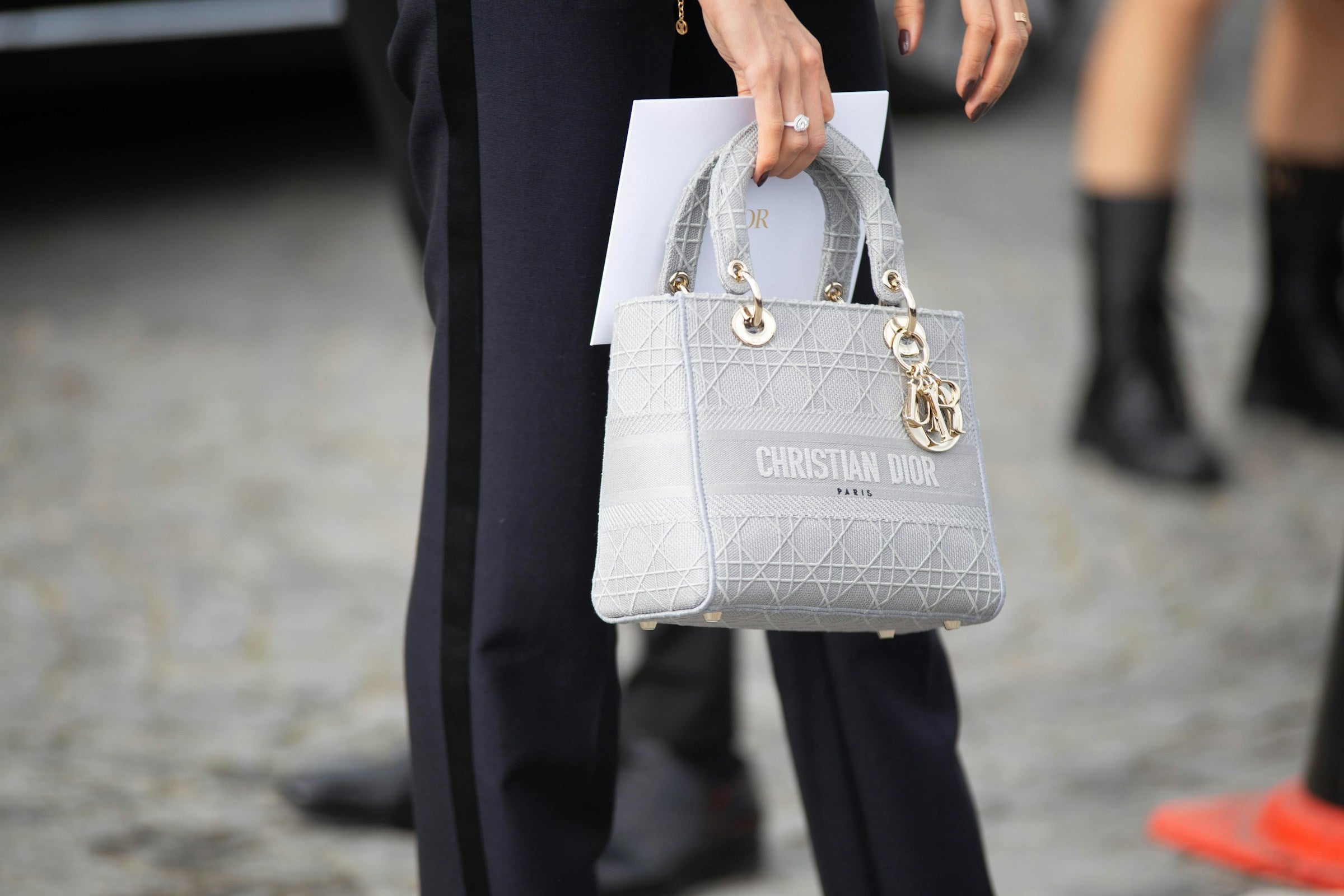Article: The Rise of Second-Hand Designer Bags: Embracing Fashion and Sustainability

The Rise of Second-Hand Designer Bags: Embracing Fashion and Sustainability
Table of Contents
- Introduction
- Reasons for the Popularity of the Second-Hand Designer Bag Market
- The Ongoing Appeal and Value of Second-Hand Designer Bags
- Tips for Purchasing and Maintaining Second-Hand Designer Bags
- Strategies to Enhance the Resale Efficiency of Second-Hand Designer Bags
- Conclusion
- Frequently Asked Questions
Introduction
In today's consumer culture, the rise of the second-hand luxury brand market not only reflects people's pursuit of high-quality living but also embodies the emphasis on environmental protection and sustainable development. Second-hand luxury goods, especially branded handbags, have become the choice of many fashion enthusiasts due to their classic design and superior quality. In 2023, the global second-hand luxury goods market reached $34.2 billion. According to a report by Business of Fashion, it is expected to grow to $37 billion by 2025. Looking ahead, the IMARC Group projects that the market size will reach $72.3 billion by 2032, with a compound annual growth rate (CAGR) of 8.9% from 2024 to 2032. This impressive growth highlights the huge potential and widespread popularity of the second-hand market.
Reasons for the Popularity of the Second-Hand Designer Bag Market
As consumers increasingly value cost-effectiveness and become more aware of the harmful impacts of fast fashion on the environment and human life, the second-hand luxury goods market has seen rapid development. This trend is driven not only by environmental awareness but also by the unique and economical appeal of second-hand items. By choosing second-hand designer handbags, consumers can acquire their desired products at more reasonable prices while enjoying the classic charm and value preservation of the brands.
The Ongoing Appeal and Value of Second-Hand Designer Bags
Second-hand designer handbags allow consumers to enjoy high-quality and exquisitely designed luxury goods at a lower cost. These bags are affordable compared to new ones, have elegant and unique styles, retain good value, and contribute to environmental recycling. Many classic styles from well-known brands like Chanel, Hermès, and Louis Vuitton not only retain their value but can even appreciate over time. The resale prices in the second-hand market are often higher than the original prices, making the purchase of second-hand designer items a savvy investment choice. Additionally, many fashion enthusiasts are keen to explore the second-hand market for limited edition or vintage models, thereby highlighting their unique taste and style. For those who appreciate classic designs and good condition, purchasing second-hand designer bags is indeed a great choice.
Tips for Purchasing and Maintaining Second-Hand Designer Bags
Authenticity Check
Recognizing the authenticity of a second-hand designer bag is crucial. Learning to identify the authenticity of brand logos, craftsmanship details, and material quality is essential. It is recommended to purchase through reputable platforms like PopChill, The RealReal, and Vestiaire Collective, which offer professional authentication services to guarantee the authenticity of the items.
Pre-Purchase Inspection
Before making a purchase, create a detailed inspection checklist. This list should include a comprehensive examination of the bag's exterior for wear, internal labels, manufacturing details, and the functionality of hardware components like zippers and buttons. By asking the seller about the bag's origin, usage history, and storage conditions, a more complete assessment of its condition can be made.
Maintenance and Care
Understanding and implementing proper maintenance and cleaning methods is crucial for extending the life of a second-hand designer bag and maintaining its resale value. For leather products, regularly use special leather care oils for gentle cleaning; for canvas materials, neutral cleaners and damp cloths are recommended. Additionally, avoid exposing the bag to sunlight for prolonged periods or storing it in damp places, and regularly clean the interior to keep the bag clean inside and out.
Strategies to Enhance the Resale Efficiency of Second-Hand Designer Bags
Pre-Sale Preparation
Before planning to sell a second-hand designer bag, thorough cleaning and maintenance can significantly enhance its appearance, making it more attractive. High-quality photos are essential tools for showcasing the condition of the bag, including various angles and close-ups of details to accurately reflect its current state. Detailed and accurate product descriptions can help potential buyers understand the product's characteristics, including brand, model, size, color, purchase year, and condition.
Pricing and Effective Negotiation Strategies
When setting the price for a second-hand designer bag, it is advisable to first research the current retail price of the same model in new condition, then adjust the price based on the bag's condition and age, typically offering a discount of 10% to 20%. For rare or limited edition styles, due to their scarcity in the market, the resale value can naturally be higher, and pricing can be adjusted accordingly. Sellers should maintain an open attitude and provide some room for negotiation while ensuring that the price reflects the real value and condition of the item to avoid setting the price too high initially, which might deter potential buyers.
Enhancing the Resale Value
Maintaining the integrity of a second-hand designer bag is important. Preserving original accessories such as dust bags, purchase certificates, and box packaging not only increases the resale value of the bag but also serves as an important proof of trust for buyers. Regular use of professional leather care products to maintain the original luster of second-hand designer bags helps to maintain or even increase their market value. In summary, achieving a high resale price for a second-hand designer bag depends not only on its inherent value but also on how well its uniqueness and preciousness are packaged to attract buyers.
Conclusion
In summary, the rise of the second-hand designer market not only reflects consumers' pursuit of fashion but also their commitment to environmental protection and sustainability. Purchasing second-hand designer bags allows for owning desired styles at more affordable prices, with the added benefits of value retention and appreciation.
However, before entering the world of second-hand designer goods, it is crucial to learn how to distinguish authenticity, understand maintenance and cleaning methods, and master the skills of buying and selling. By choosing reliable platforms and seeking professional authentication, we can find our own treasures in the second-hand designer market.
Let us embrace second-hand designer brands together, where fashion and sustainability go hand in hand!
Frequently Asked Questions
What are the advantages of buying second-hand designer handbags?
The main advantages of buying second-hand designer handbags include:
- Affordable prices compared to new items
- Classic and unique styles that add personal flair
- Value retention or even appreciation, making it a smart investment
- Supporting environmental protection and sustainable development
How do I ensure a second-hand designer bag is authentic?
Key steps to authenticate a second-hand designer bag:
- Learn about brand logos, craftsmanship details, and material quality
- Purchase through reputable platforms that provide authentication services
- Check if the bag comes with complete accessories like dust bags and certificates
- Ask the seller about the bag's origin and usage history
What are the risks of buying second-hand designer bags?
Potential risks of buying second-hand designer bags include:
- Encountering sellers offering counterfeit items
- The bag's condition being worse than described
- Inflated prices beyond reasonable levels
- Difficulties resolving transaction disputes
How do I properly maintain a second-hand designer bag?
Key points for properly maintaining a second-hand bag:
- Regularly use professional leather care oils for gentle cleaning and conditioning
- Avoid prolonged exposure to sunlight or storage in damp environments
- Keep the bag clean inside and out, regularly cleaning the interior
- Properly store the bag and its original accessories
What are the tips for reselling second-hand designer bags efficiently?
Tips for enhancing the resale efficiency of second-hand designer bags include:
- Thoroughly clean and maintain the bag to enhance its appearance
- Take high-quality photos from various angles and close-ups to showcase the actual condition
- Provide accurate and detailed product information descriptions
- Price reasonably based on market research, leaving room for negotiation
- Preserve original accessories to increase trust and value
Which second-hand designer bag styles retain their value the best?
Classic styles with the best value retention and appreciation potential include:
- Chanel 2.55, Boy Bag, and others
- Hermès Birkin and Kelly bags
- Louis Vuitton Speedy, Neverfull, and other vintage styles
- Dior Lady Dior bags
- Gucci Bamboo handbags and other vintage/antique styles
- Limited edition and rare styles

